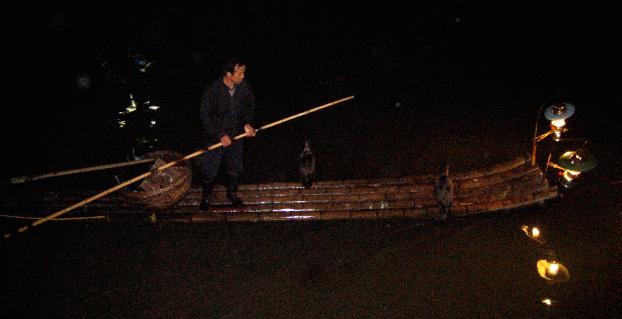
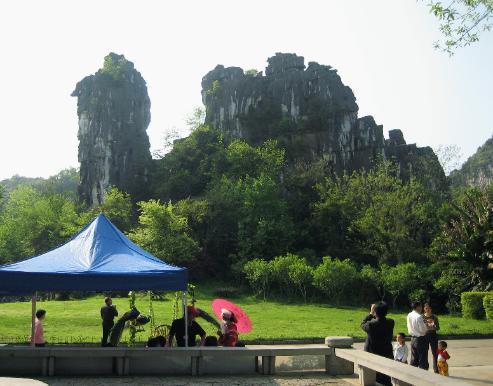
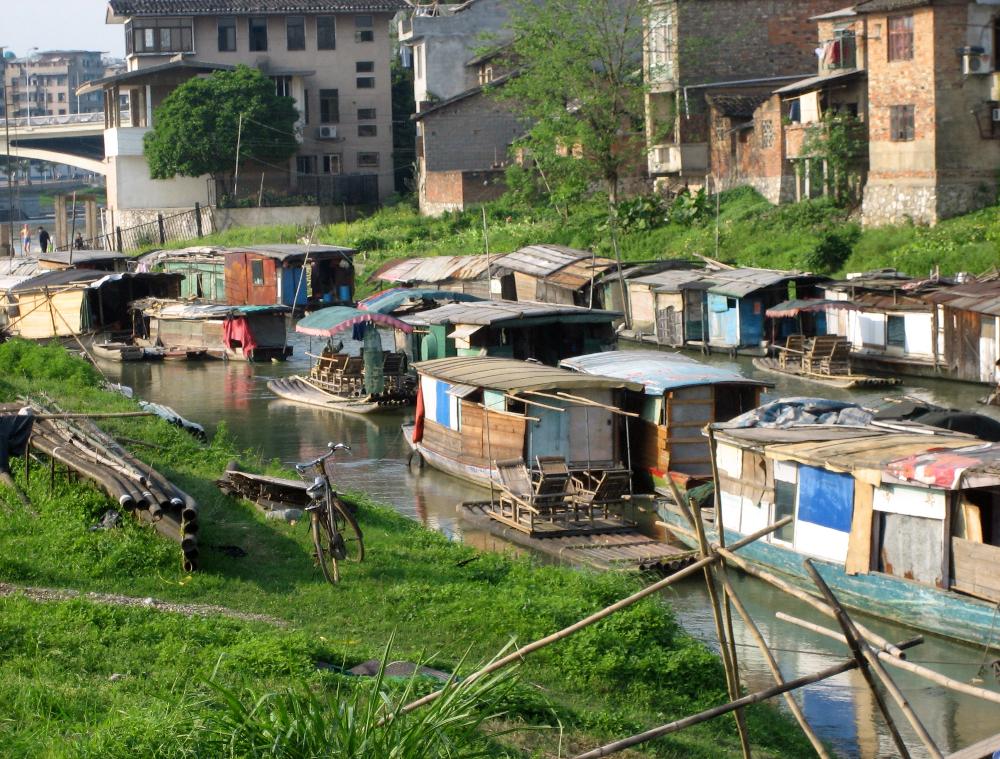
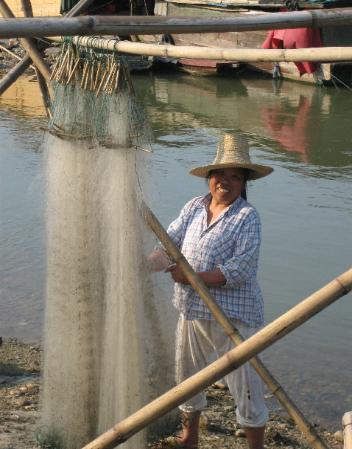
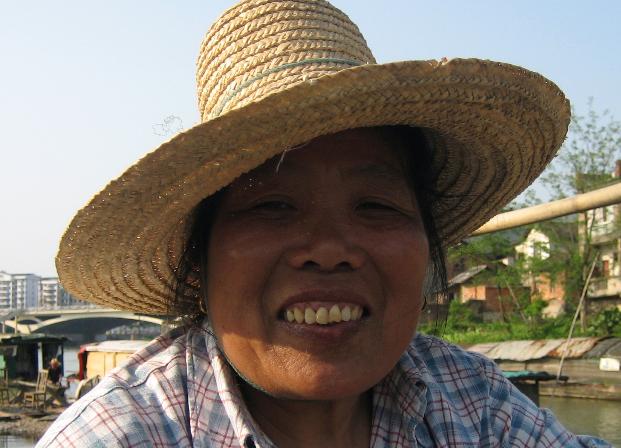
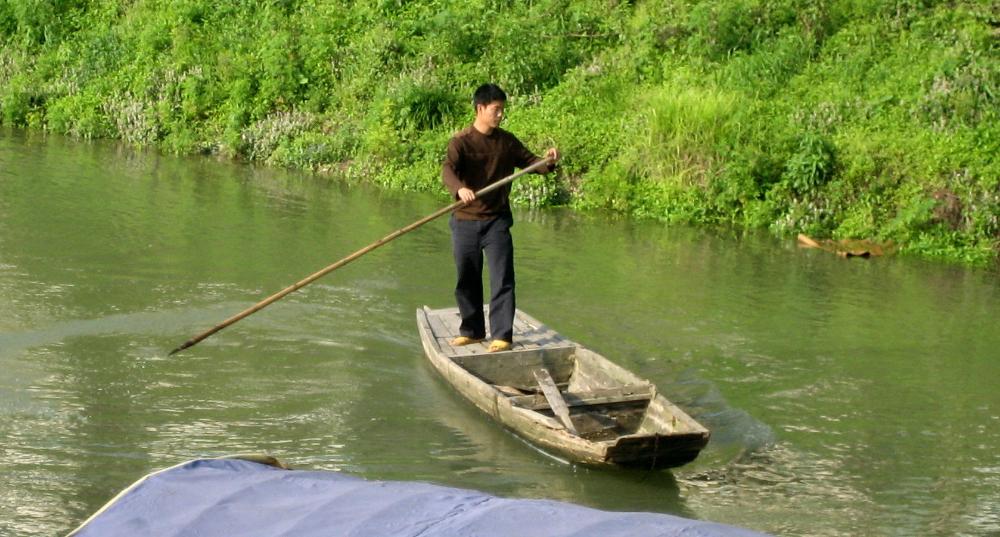
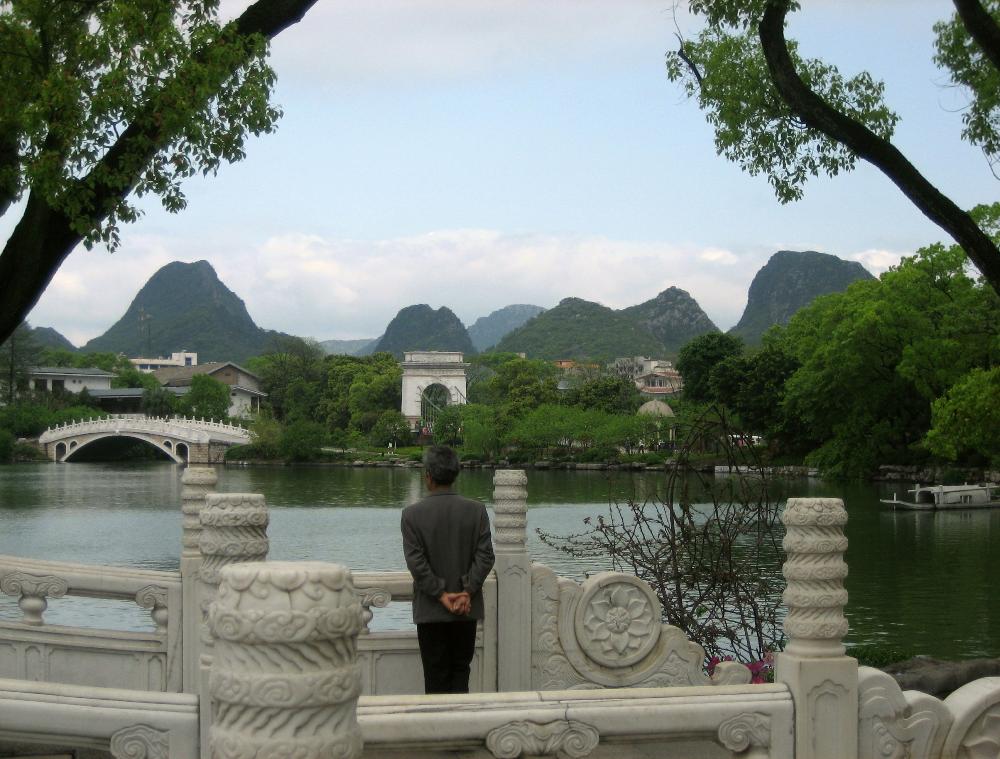
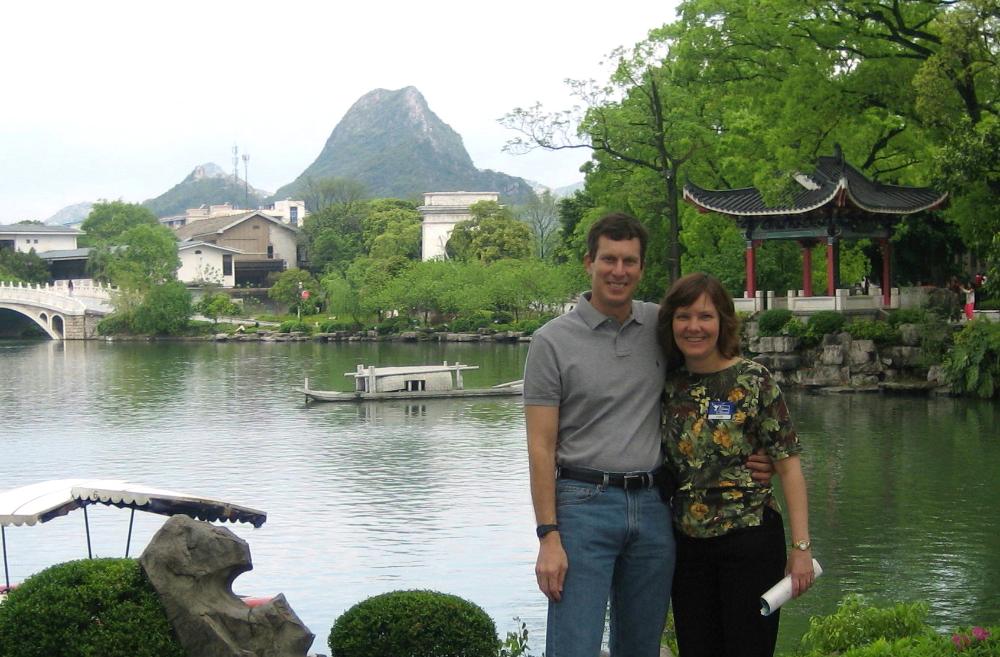
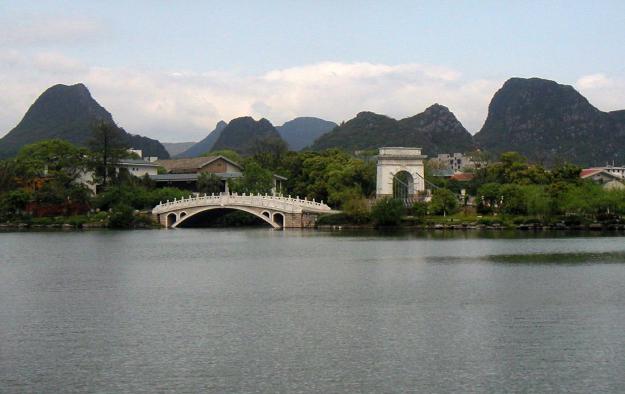
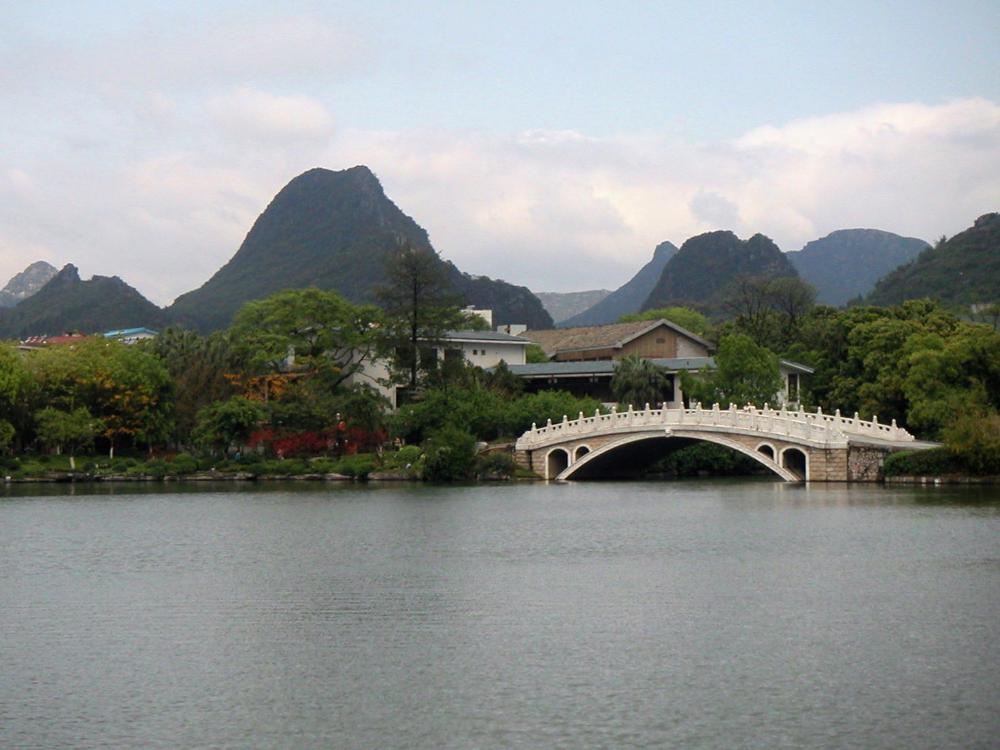
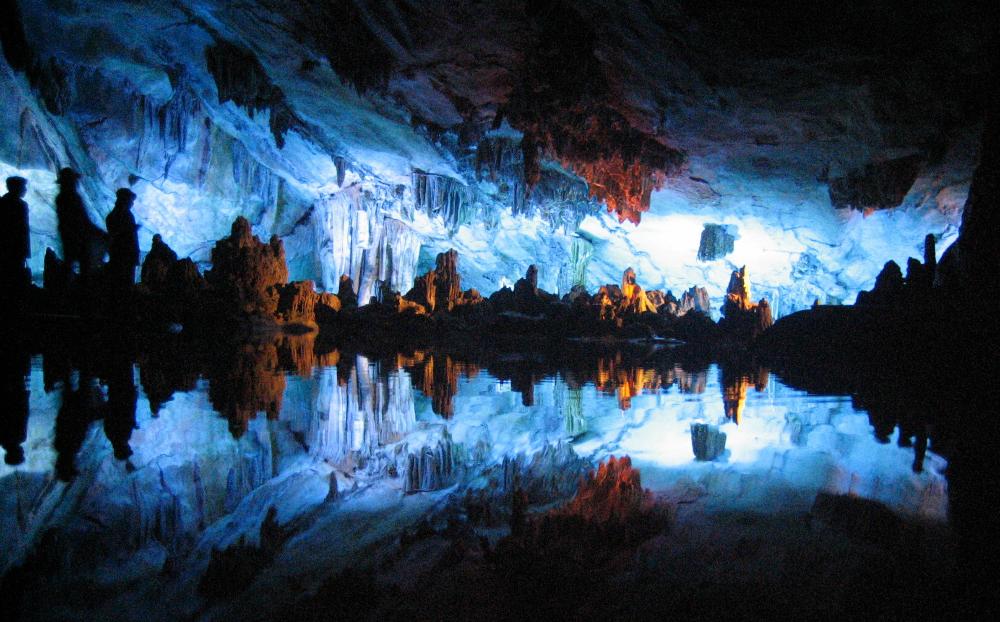
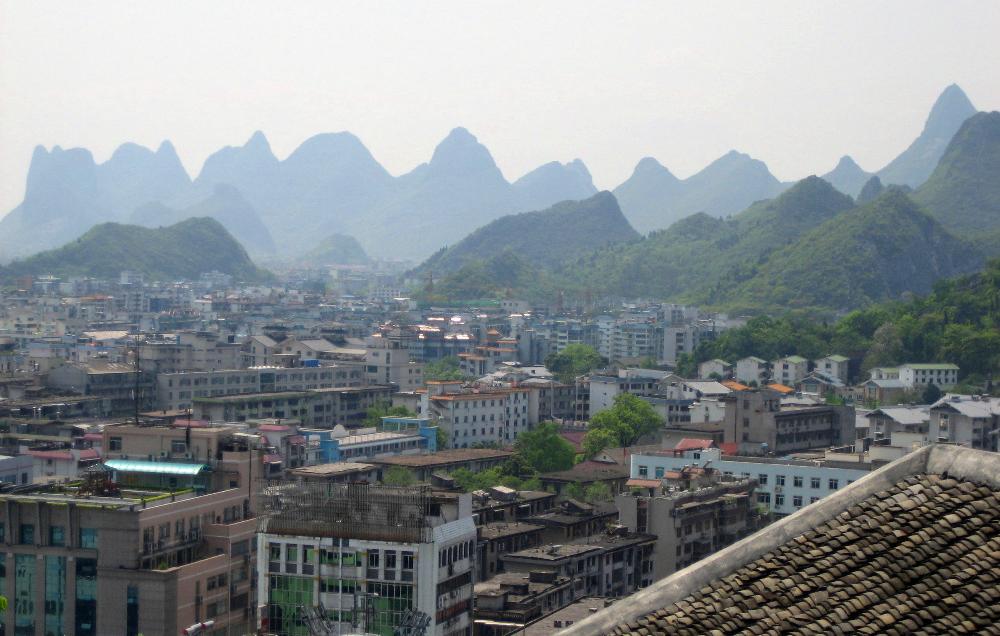

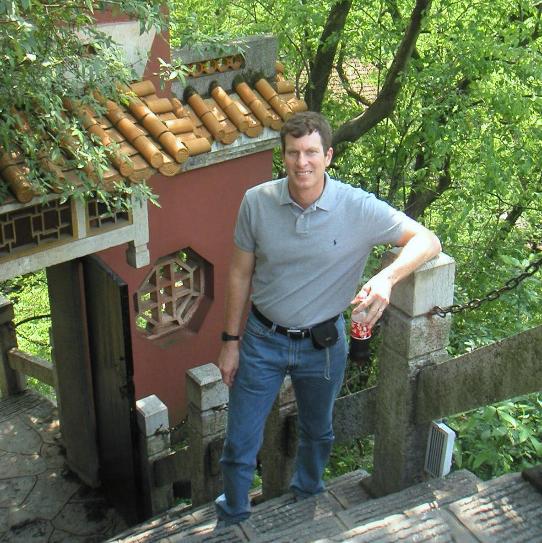
| With a little imagination, Camel Hill in Seven Star Park really does resemble a two-humped camel |
| Off the beaten tourist path, we discover these sampan houseboats clustered together in a little river community on a spur of the Li River |
Where We Be
| At the water’s edge is a woman mending fishing nets. We greet each other with "ni hao" and shared smiles. |
| This young man navigates his sampan with a sure hand towards his houseboat |
| This Chinese gentleman has the right idea...hands behind back, quietly contemplating the beauty of this magic place |
| We love the gorgeous scenery in Southwest China and definitely hope to come back for more |
| Guilin with its spectacular countryside is an easy place to fall in love with |
| Guilin, China |
| We start the day with a walk through a pretty park offering great lake views of the karst hills |
Guilin sits on the west bank of the Li River in
Southwest China and is best known for the
3,000 karst limestone hills surrounding the city.
These hills are like something out of a dream. If
you’ve ever seen traditional Chinese scrolls
depicting steep hills rising abruptly out of rice
paddies, this is the place. The paintings aren’t
as fanciful as they might appear at first glance,
because the landscape around here really does
look like that. "I often sent pictures of the hills
of Guilin which I painted to friends back home,"
wrote Fan Chengda, a 12th-century Chinese
poet, "but few believed what they saw."
Guilin's population is under a million, making it
small by Chinese standards, but it has always
been a tourism heavyweight due to its stunning
natural beauty. It's the second most visited site
by Chinese tourists (after Hangzhou). Each year
there are 20 times more tourists than residents
in Guilin. Of course, now we have discovered it
too -- and we certainly hope to return.
Southwest China and is best known for the
3,000 karst limestone hills surrounding the city.
These hills are like something out of a dream. If
you’ve ever seen traditional Chinese scrolls
depicting steep hills rising abruptly out of rice
paddies, this is the place. The paintings aren’t
as fanciful as they might appear at first glance,
because the landscape around here really does
look like that. "I often sent pictures of the hills
of Guilin which I painted to friends back home,"
wrote Fan Chengda, a 12th-century Chinese
poet, "but few believed what they saw."
Guilin's population is under a million, making it
small by Chinese standards, but it has always
been a tourism heavyweight due to its stunning
natural beauty. It's the second most visited site
by Chinese tourists (after Hangzhou). Each year
there are 20 times more tourists than residents
in Guilin. Of course, now we have discovered it
too -- and we certainly hope to return.
| Reed Flute Cave is the most famous of the more than 3,200 caves in and around Guilin. The highlight is the Crystal Palace with its lovely and mysterious tarn at the back, softly lit with blue light, reflecting the stalactites and stalagmites above it. |
| From Solitary Beauty Peak the city of Guilin spreads out beneath us, with hazy rows of karst hills rising up behind |
| Solitary Beauty Peak is a 500-foot-high limestone peak in the center of the city. We climb a spiraling series of 400 stone steps up a steep incline to the top for panoramic views. |
| These students at Guanxi Normal College seem to be holding their own impromptu parade as they wave a large Chinese flag through campus. "I love NBA!" the young man calls out to us as the women giggle shyly. |
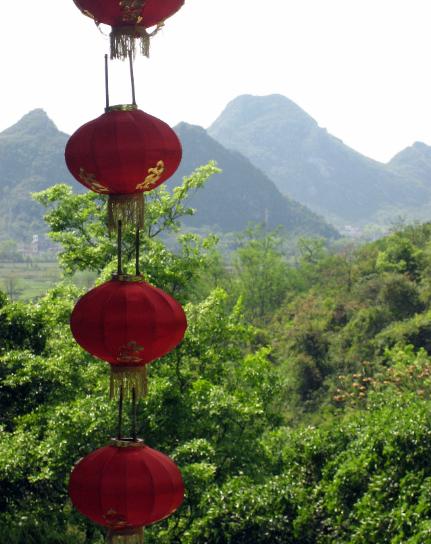
| Cormorant Fishing |
Late that evening, after sunset, we go on a half-
hour excursion to see cormorant fishing, a
traditional mode of fishing in China. We board a
small ferry on the Li River. The boat slowly
chugs away from the pier, paralleling a fisher-
man on a bamboo raft. The fisherman stands
near the back of the raft and uses a long pole
to propel himself through the shallow water.
Lanterns are suspended over the water at bow
and stern to attract the fish. Four cormorants
perch on the front of the bamboo raft.
When the fisherman softly calls out “hway,
hway,” the cormorants dive off the raft at his
command. (One of them needs a little extra
prodding to get off the comfortable raft, so the
fisherman nudges him off with his pole.) The
cormorants are excellent swimmers -- they can
out-swim a fish. When they see one, they dive
down, chase after it underwater, and more
often than not come up with one in their gullets.
Since the cormorants have rings around the
base of their necks, they can’t swallow the fish,
so instead they clamber back onto the raft and
disgorge the fish for the fisherman. He collects
the fish in a big woven basket on the back of
the raft. The cormorants can swallow the
smaller fish they catch, so it’s only the big ones
that make it back to the fisherman. When their
work is done, the rings are removed from the
cormorants’ necks so they can feed normally. It
is said one good cormorant can feed an entire
family.
hour excursion to see cormorant fishing, a
traditional mode of fishing in China. We board a
small ferry on the Li River. The boat slowly
chugs away from the pier, paralleling a fisher-
man on a bamboo raft. The fisherman stands
near the back of the raft and uses a long pole
to propel himself through the shallow water.
Lanterns are suspended over the water at bow
and stern to attract the fish. Four cormorants
perch on the front of the bamboo raft.
When the fisherman softly calls out “hway,
hway,” the cormorants dive off the raft at his
command. (One of them needs a little extra
prodding to get off the comfortable raft, so the
fisherman nudges him off with his pole.) The
cormorants are excellent swimmers -- they can
out-swim a fish. When they see one, they dive
down, chase after it underwater, and more
often than not come up with one in their gullets.
Since the cormorants have rings around the
base of their necks, they can’t swallow the fish,
so instead they clamber back onto the raft and
disgorge the fish for the fisherman. He collects
the fish in a big woven basket on the back of
the raft. The cormorants can swallow the
smaller fish they catch, so it’s only the big ones
that make it back to the fisherman. When their
work is done, the rings are removed from the
cormorants’ necks so they can feed normally. It
is said one good cormorant can feed an entire
family.
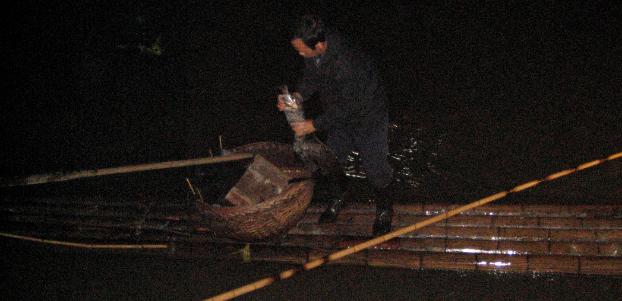
| Cormorant fishing on the Li River -- a traditional mode of fishing in China for thousands of years |
